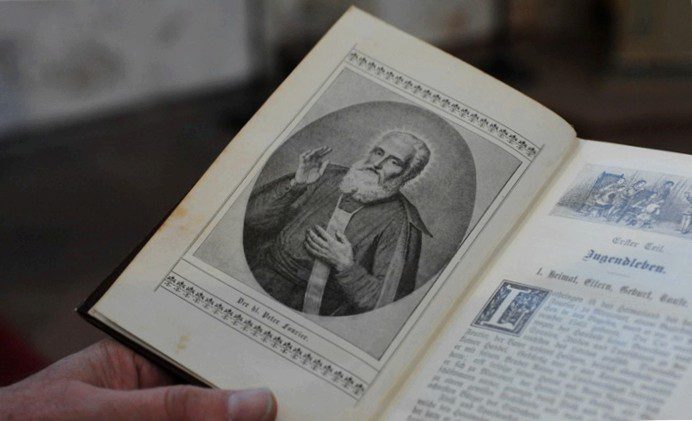Pioneer of tuition-free education

He was a pioneer of education without school fees: 450 years ago, on the 30th anniversary of his death, Pierre Fourier was born. November 1565, was born the saint Pierre Fourier in Lorraine. His vision of education for girls even from poor families was groundbreaking.
Trier (KNA) Education – and then also for girls? Also for poor girls, even for those from Protestant families? A bold, unheard-of idea in Europe at the end of the 16th century. Century. When the young priest Pierre Fourier opened Lorraine's first public school for girls in Poussay in July 1598, free of tuition fees, he was one of the pioneers across Europe.
It is true that even in the Middle Ages girls were able to receive an education, and individual women such as Hildegard von Bingen even became outstanding scholars. But this was mostly limited to members of the upper classes. To ensure that poor girls could also receive schooling, in the 16. The Ursulines, founded by St. Angela Merici, were the first women's order in Europe in the late 16th century. Fourier also relied on the support of dedicated nuns, most notably Blessed Alix Le Clerc.
An era of contrasts
Pierre Fourier was born 450 years ago, on 30. November 1565, in the up-and-coming Lorraine town of Mirecourt. "It was an era full of contrasts, like ours, a time of upheaval," explains Essen nun Maria Dorothea Kuld. Belongs to the order of Augustinian nuns of the "Congregatio Beatae Mariae Virginis", founded by Fourier and Le Clerc. Kuld has long studied the life and work of the order's founder.
The period in which the son of a master clothier and an officer's daughter grew up was marked by religious dynamics between the Reformation and the Counter-Reformation, social upheavals and wars. At the age of 13 he entered a Jesuit college, studied theology and law. Kuld points to the Jesuit rule that no one should be rejected "because of low birth or poverty". He later adopted this guiding principle for his girls' schools. At the age of 20, he joined the Augustinian canons.
Ordained a priest in Trier
Fourier was ordained a deacon in 1588 in the Trier collegiate church of Saint Simeon. His diocese Toul belonged at that time to the ecclesiastical province of the archdiocese Trier. In the no longer existing church, a former superstructure of the Roman city gate Porta Nigra, he was on 25. February 1589 also ordained priest. He then studied theology and law in Pont-a-Mousson. After receiving his doctorate, he took over the parish of Mattaincourt in 1597 at the age of 32.
There, the young priest was committed to helping the poor. "His spirituality is marked by dynamism," says Sister Dorothea. Fourier founds brotherhoods, an emergency fund and a bank to provide loans to those in need. "In the lack of education of his contemporaries, he recognizes the main root of social misery and poverty," says Kuld. Against great opposition, he set about founding the girls' school, in which he was helped by Alix Le Clerc and other comrades-in-arms.
Girls' school as a "bold project
The girls' school not only taught catechism, reading and writing – the students were also to receive a holistic education to enable them to make a living. Poor or rich, Catholic or Protestant girls – they were all treated equally. Kuld calls the school a "bold project in a society of estates and in a time of religious struggles".
1597 Fourier and Le Clerc founded the Congregation of Notre Dame, which was consecrated by Pope Urban VIII in 1628. was confirmed with the apostolic task of education. In Trier, the nuns known there as Welschnonnen founded their first branch in Germany in 1640. The order quickly spread further. By 1789, 90 houses had been built, in which about 4.000 sisters worked.
In the midst of the turmoil of the Thirty Years' War, Pierre Fourier, who advocated the independence of Lorraine, had to leave his place of activity Mattaincourt. In 1636 he went into exile in Franche Comte.
On 9. December 1640, the "good father of Mattaincourt" died in Gray. Pope Leo XIII. canonized him in 1897.